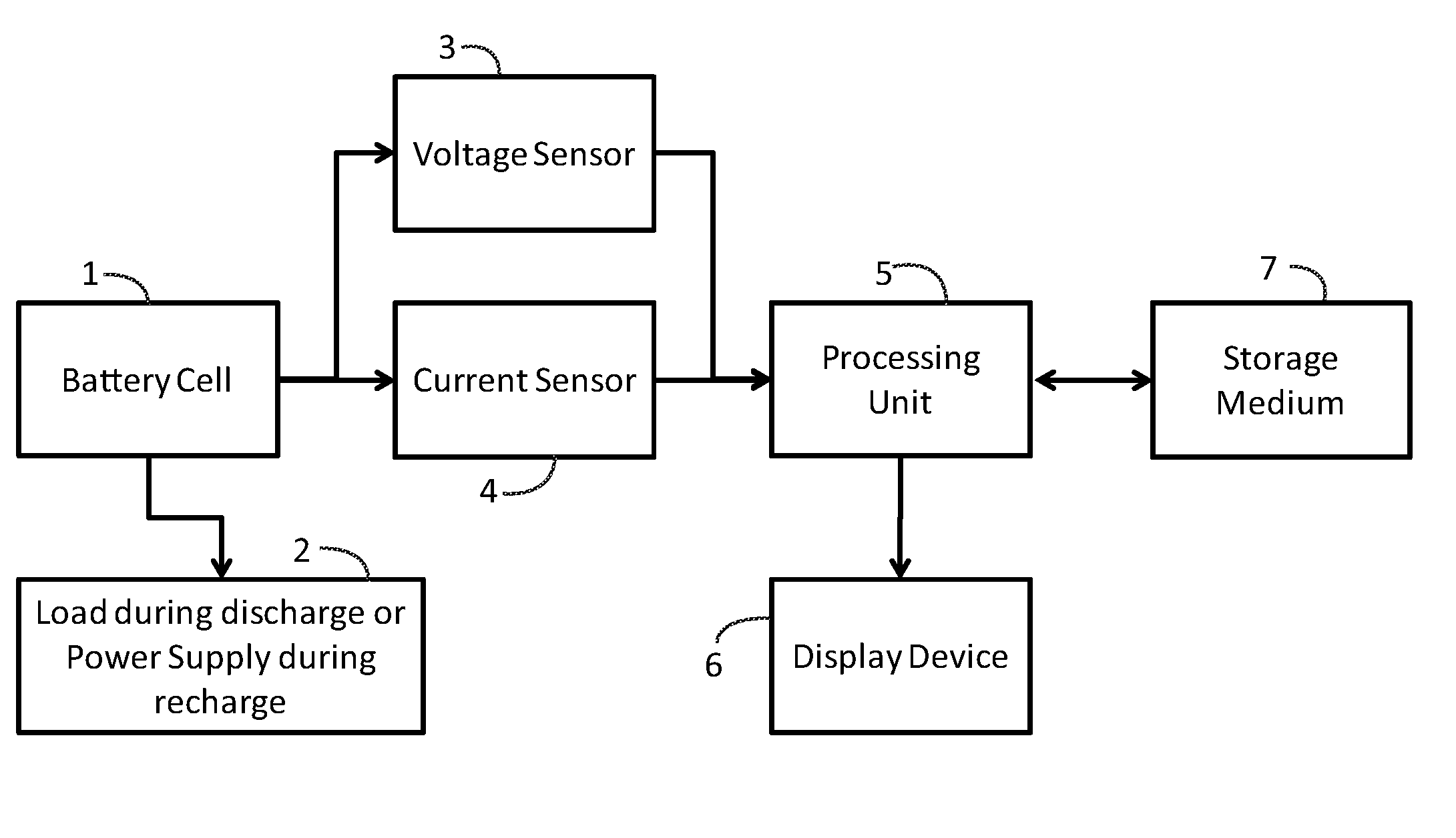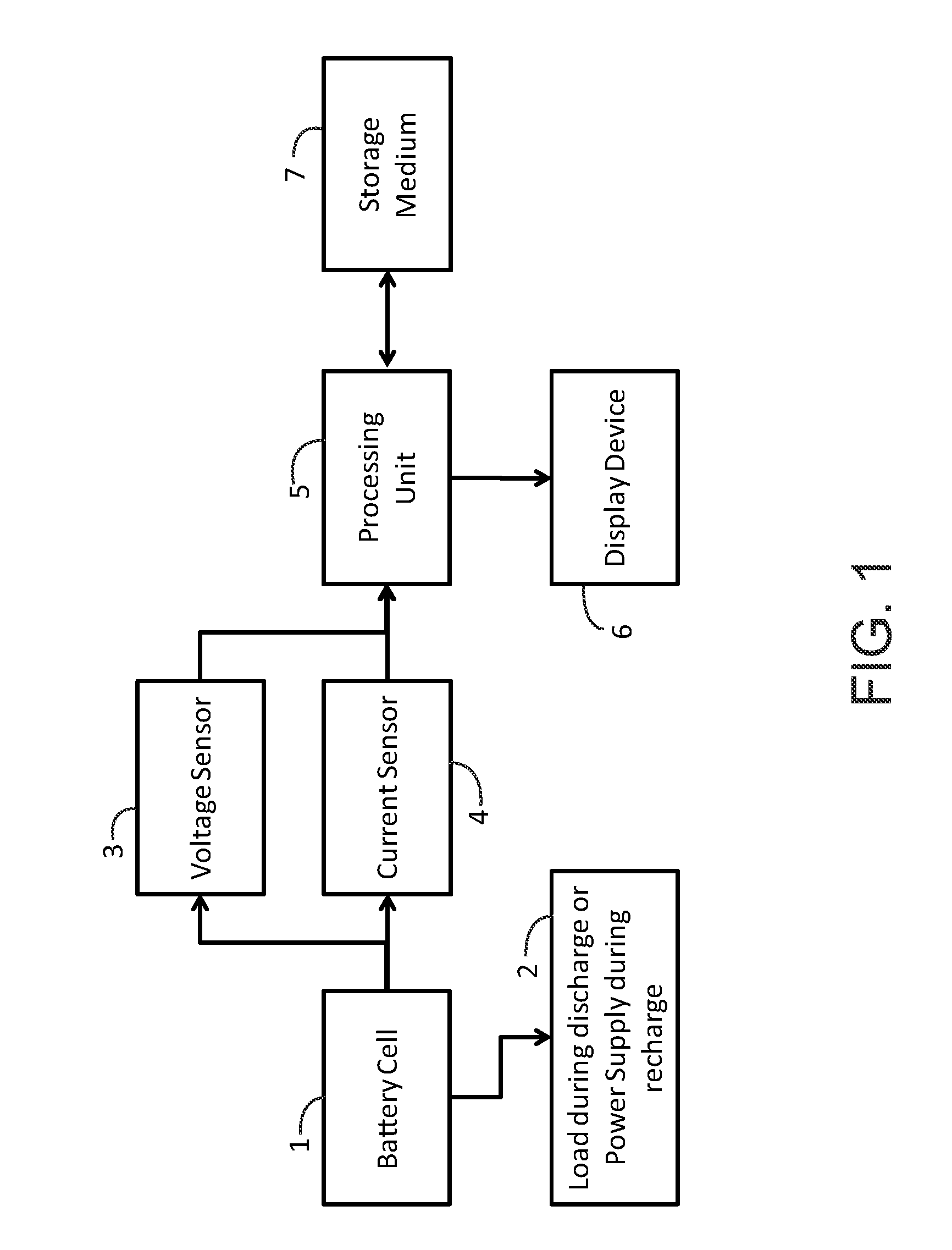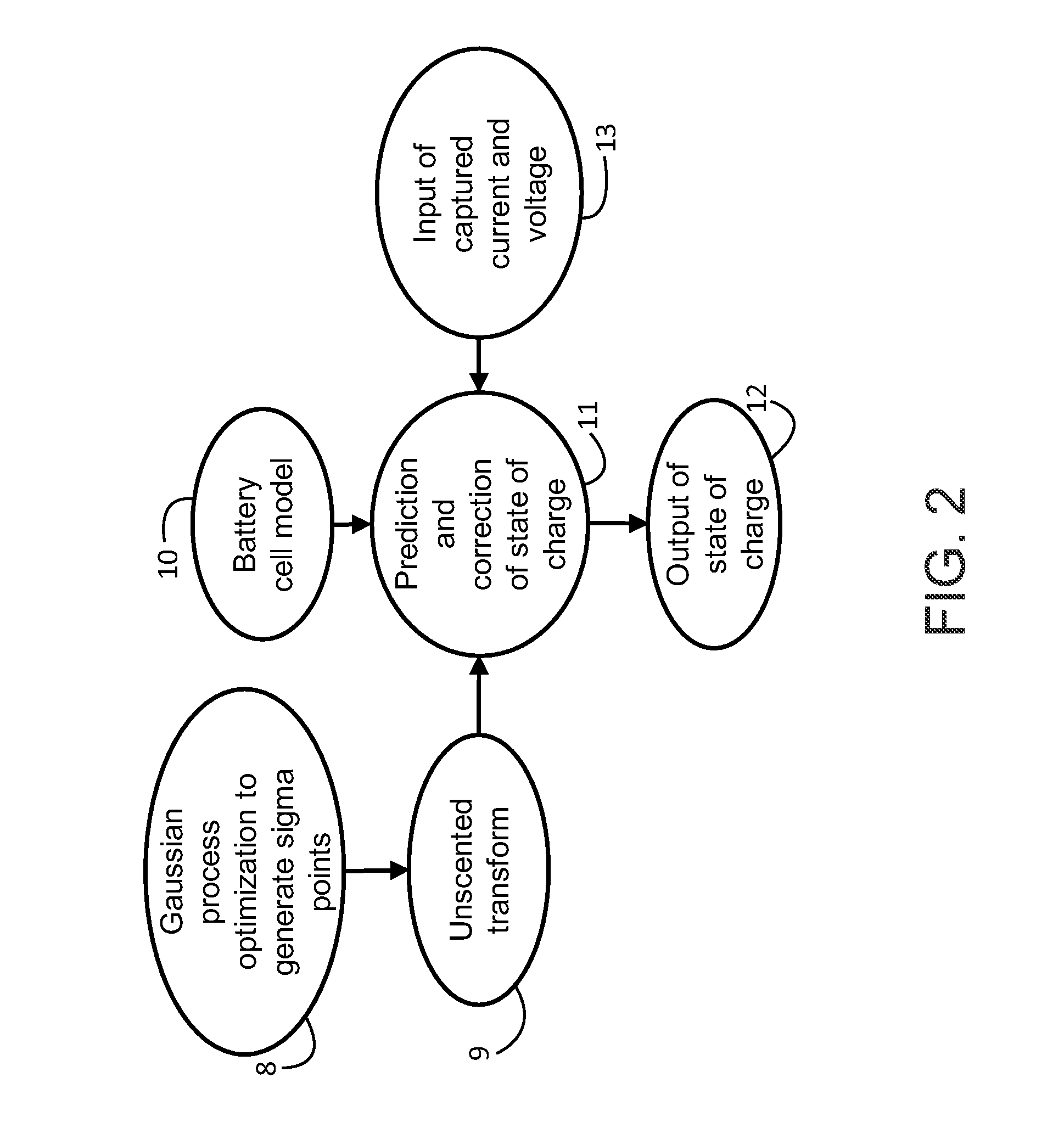Method and system for operating a battery in a selected application
a battery and application technology, applied in the field of electrochemical cell manufacturing, can solve the problems of poor performance, difficult application in complex electrochemical systems, and inability to robustly apply Plett's techniques, and achieve the effects of accurate estimation of the state of charge, and improved performan
- Summary
- Abstract
- Description
- Claims
- Application Information
AI Technical Summary
Benefits of technology
Problems solved by technology
Method used
Image
Examples
example 1
Comparison of Extend Kalman Filter and Unscented Transform Based Correction-Prediction Filter
[0036]This example demonstrates the better performance of the unscented transform based correction-prediction filter over the conventional extended Kalman filter. For the purpose of demonstration, battery cell cycling test is replaced with multiphysics simulations, which serve completely the purpose of evaluating the performance of estimation filters. The process noise and sensor noise are mimicked by computer generated random numbers from a Gaussian distribution. Due to stochastic feature of the prediction-correction filter for battery state of charge estimation, the process is repeated 50 times. The root mean square error of state of charge estimation is recorded for each time of a run of the simulation. The mean and standard deviation of the root mean square error for the 50 runs are reported in FIG. 7. It is shown that unscented transform based prediction-correction filter performs much ...
example 2
SOC Estimation
[0037]This example demonstrates the state of charge estimation of an electrochemical cell. As an example of the problems encountered by the battery designer, the precise state of charge for the present electrochemical cell setup is needed. In order to read the state of charge output and evaluate accuracy of the state of charge estimation, a computer aided system for a multi-physics model of the electrochemical system is used instead of a physical battery cycling system setup in the current example. The current load applied to the battery consists of randomly generated square waves (with random values for both amplitude and interval). In this example, a battery equivalent circuit model of EC-2 is used. The parameters of resistors and capacitors used in EC-2 are obtained a priori by fitting the voltage time history against the multi-physics simulation generated curve as shown in FIG. 8A. The obtained parameters are later used for the battery equivalent circuit model used...
example 3
EC-2 Models Battery Behavior Better than EC-1
[0038]This example demonstrates the state of charge and voltage estimation of an electrochemical cell by using EC-1 and EC-2 battery equivalent circuit models. As an example of the problems encountered by the battery designer, the precise state of charge for the present electrochemical cell setup is needed. In order to read the state of charge and voltage output and evaluate accuracy of the state of charge and voltage estimation, a computer aided system for a multi-physics model of the electrochemical system is used instead of a physical battery cycling system setup in the current example. The discharge current used in this example consists of regular square waves with fixed amplitude and temporal interval. In this example, battery equivalent circuit models with EC-1 and EC-2 are used to fit the multi-physic simulation generated discharge voltage curves. It is shown that EC-2 is able to fit the multi-physics simulation generated voltage c...
PUM
 Login to View More
Login to View More Abstract
Description
Claims
Application Information
 Login to View More
Login to View More - R&D
- Intellectual Property
- Life Sciences
- Materials
- Tech Scout
- Unparalleled Data Quality
- Higher Quality Content
- 60% Fewer Hallucinations
Browse by: Latest US Patents, China's latest patents, Technical Efficacy Thesaurus, Application Domain, Technology Topic, Popular Technical Reports.
© 2025 PatSnap. All rights reserved.Legal|Privacy policy|Modern Slavery Act Transparency Statement|Sitemap|About US| Contact US: help@patsnap.com



